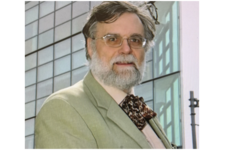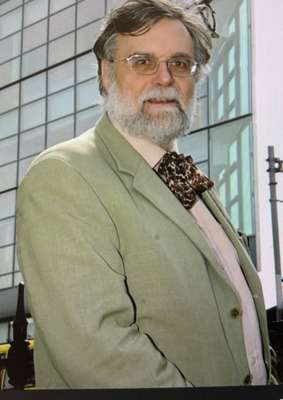
06/11/2025
The global scientific community mourns the loss of Professor Michael Coey, who passed away on 6th October 2025, at the age of 80.
 Michael was a giant of magnetism and a distinguished physicist whose pioneering contributions, exemplary mentorship and unwavering curiosity have left an enduring legacy in science and society. His work advanced many topics in magnetism and materials science and inspired generations of scientists in Ireland and around the world.
Michael was a giant of magnetism and a distinguished physicist whose pioneering contributions, exemplary mentorship and unwavering curiosity have left an enduring legacy in science and society. His work advanced many topics in magnetism and materials science and inspired generations of scientists in Ireland and around the world.
Born in Belfast in 1945, Michael Coey was instilled with a restless curiosity, an adventurous spirit and a fascination with the natural world. After studying physics at Cambridge, he became a volunteer teacher of English and physics at the Sainik School, in Balachadi, India. He then moved to the University of Manitoba in Canada in 1968 to carry out his PhD under the supervision of Prof. Allan Morrish. In 1971, he continued his journey at the CNRS in Grenoble, France, first as a post-doc and then as a staff scientist, later gaining a higher doctorate. His global perspective was further shaped by a sabbatical at the IBM Research Center at Yorktown Heights, USA. In 1978, Michael brought his wealth of experience home to Ireland, joining Trinity College Dublin, where he rose to become the Erasmus Smith’s Professor of Natural and Experimental Philosophy. His international engagement continued through a Fulbright Visiting Scholarship at the University of California, San Diego and visiting professorships at the University of Strasbourg, the National University of Singapore and Beihang University in Beijing, China.
Michael’s extensive research, spanning the fields of magnetism and spintronics, was as broad and far-reaching as his travels. He began by deciphering the mysteries of disordered magnetic oxides using Mössbauer spectroscopy before pioneering the study of magnetic order in natural minerals and amorphous solids. Following the breakthrough discovery in Japan and the US of the exceptional hard magnetic properties of the Nd2Fe14B phase, Michael’s group and another group working in Japan independently discovered another Fe-based high performance hard magnetic phase, Sm2Fe17N3 - a landmark achievement. His insatiable curiosity then propelled him to the forefront of magneto-transport in half-metallic oxides and the device physics of magnetic tunnel junctions. Never confined to a single path or topic, he also investigated the influence of magnetic fields within a range of scientific domains, from electrochemistry to agriculture, and explored d0 ferromagnetism. His ‘benchtop physics’ approach demonstrated his passion for hands-on experimentation and ingenuity, demonstrating exceptional resourcefulness even when faced with limited resources.
His legacy is etched not only in his discoveries but in the people he inspired. Over his distinguished career, Michael supervised more than forty PhD students and hosted countless post-doctoral fellows and visitors at Trinity College Dublin, nurturing a vibrant, global network of collaborators. Together with these and countless other colleagues and collaborators scattered around the globe, Michael authored over 800 research papers, and filed 25 patents. He also wrote and edited a number of highly influential books that continue to serve as essential reference textbooks for researchers in magnetism worldwide. These include Magnetic Glasses (1984, with Kishin Moorjani), Permanent Magnetism (1999, with Ralph Skomski), and Magnetism and Magnetic Materials (2010), whose second extended edition is forthcoming. Additionally, he co-edited several important volumes such as Rare Earth Iron Permanent Magnets (1996), Concerted European Action on Magnets (1989), Structural and Magnetic Phase Transitions in Minerals (1988), and the Handbook of Magnetism and Magnetic Materials (2021).
Bridging the gap between academia and industry, Michael was a committed innovator. In parallel to his wide-ranging academic collaborations, Michael nurtured industrial partnerships and co-founded two spin-off companies with former PhD students and other collaborators. Magnetic Solutions, created in Dublin in 1994, initially focused on making permanent magnet-based magnetic field sources. Remedy, created in Strasbourg in April 2025, uses magneto-electrochemical separation of rare earths to address sustainability in permanent magnet production.
Michael’s outstanding contributions were recognised by the world’s most esteemed scientific institutions. He was elected a Member of the Royal Irish Academy (1987), a Fellow of the Royal Society (2003), and a Foreign Associate of the US National Academy of Sciences (2005). He was bestowed with a number of honours, the most notable ones being the Charles Cree Medal of the IOP (1997), the Gold Medal of the RIA (2005), a Humboldt Research Award (2013), the Max Born Medal & Prize of the IOP and DPG (2019), and a China Science and Technology Cooperation Award (2024). He also received honorary degrees from the Institute National Polytechnique Grenoble, Le Mans University and Trinity College Dublin.
Michael generously served the international magnetism community in many ways. From 1987 to 1994, he acted as chief coordinator of the Concerted European Action on Magnets (CEAM), a cooperative network, which brought together over 90 groups based in universities, research centres and companies in 13 countries, working on all aspects of the properties, processing and applications of rare-earth iron permanent magnets. CEAM fostered collaborations and forged enduring relationships among research groups across Europe. Michael helped launch the Joint European Magnetic Symposia (JEMS), the inaugural edition of which took place in 2001 in Grenoble. He chaired the Magnetism Commission (C9) of the International Union of Pure and Applied Physics (IUPAP), and in 2003, he inaugurated the bestowal of the Néel medal, during the International Conference on Magnetism, to recipients of the IUPAP Magnetism Award. Michael served many years on the Advisory Committee of the International Workshop on Rare Earth and Future Permanent Magnets and Their Applications (REPM), and gave his final conference talk (on-line), in July of this year, at REPM 2025 held in Tsukuba, Japan.
Michael’s impact on research at Trinity went beyond his own work in magnetism, as he played a key role in establishing the CRANN Institute, a world-leading hub for nanoscience and materials research, in 2006. He was also deeply committed to education and public engagement in Ireland and beyond. He loved being part of the academic community at Trinity and teaching physics both as a scientific discipline and as a reflection of its rich history. On the international stage he served as an IEEE Magnetics Society Distinguished Lecturer in 2006, and regularly gave lectures at the European School on Magnetism (available on-line). His interest in the history of magnetism is reflected in the text books he wrote and variations of a public lecture he gave on the history of magnetism, in Dublin (1995) and Paris (2009, in French, and available on-line). His dedication to outreach was further evidenced by his role in the establishment of the Trinity Science Gallery, aimed at engaging the public and inspiring future generations.
Michael Coey’s passing leaves a huge void in the lives of his wife, the poet Wong May, his sons, James and Dominic, his extended family, and a community forever enriched by his intellect, generosity, and spirit. His towering legacy, however, will continue to ignite curiosity and drive innovation for generations to come







